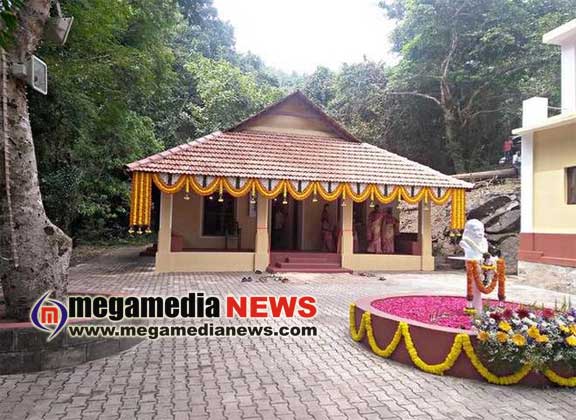Kota Shivaram Karanth’s restored residence inaugurated in Puttur
12:35 PM, Wednesday, October 11th, 2017 Mangaluru: The former Chief Minister, M. Veerappa Moily, has said that the Balavana of Jnanpith recipient Kota Shivaram Karanth should be developed on the lines of Santiniketan in West Bengal with full of activities. Speaking at the 115th birth anniversary celebration of Karanth at Parladkka here on Tuesday where the restored residence of the writer inside Balavana was also inaugurated on the occasion, Mr. Moily said the Balavana should become a research centre for Yakshagana.
Mangaluru: The former Chief Minister, M. Veerappa Moily, has said that the Balavana of Jnanpith recipient Kota Shivaram Karanth should be developed on the lines of Santiniketan in West Bengal with full of activities. Speaking at the 115th birth anniversary celebration of Karanth at Parladkka here on Tuesday where the restored residence of the writer inside Balavana was also inaugurated on the occasion, Mr. Moily said the Balavana should become a research centre for Yakshagana.
Mr. Moily said that Karanth lived larger than life and stood equal with noted littérateurs of the world. Though he was well read and studied Western literature, his writings remained indigenous, down to earth without the influence of Western literature. He said that the late HaMa Nayak also wanted the Balavana to become a centre of activity like Santiniketan. He suggested the State government to take up the Bala Prapancha and Vignana Prapancha projects in the Balavana where the late writer lived.
Kshama Rao, daughter of Karanth, said a blueprint for the development of Balavana has been prepared. It included proposal for the recreation of study room and restroom of Karanth in the renovated house. She said that keeping the vision of Karanth in mind, the Balavana should be developed as an intellectual centre.
Meanwhile, Bengaluru chapter of INTACH has restored the residence retaining the original character of the house. The walls have been constructed with a combination of laterite pillars and load-bearing mud walls. Shrinkage cracks had developed in the mud walls and near the laterite pillars. They were filled in with mud mortar, made using the traditional, an elaborate process. A mix of fine and coarse mud was mixed with water and stamped. The mortar was filled with gaps. Then it was beaten for a few days with a wooden “kodchi” to remove any shrinkage cracks that appeared. The walls were later re-plastered with lime mortar which was made on site using the traditional process of grinding lime and sand.
According to INTACH, while restoring the roof, only those wooden members of the roof truss which were deteriorated and beyond repair have been replaced by new members. All other original roof members have been re-used. Healthy portions that were usable from deteriorated members were salvaged and recycled for use elsewhere in the structure.
Simillar Posts
Warning: count(): Parameter must be an array or an object that implements Countable in /home/megamcaq/public_html/wp-content/plugins/post-plugin-library/common_functions.php on line 357
- None Found
Leave a Reply
© Copyright 2008 www.megamedianews.com All Rights Reserved. Privacy Policy








 Posted in
Posted in  Tags:
Tags: 



